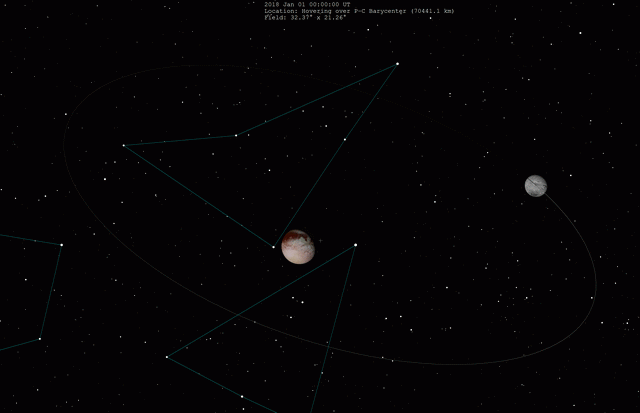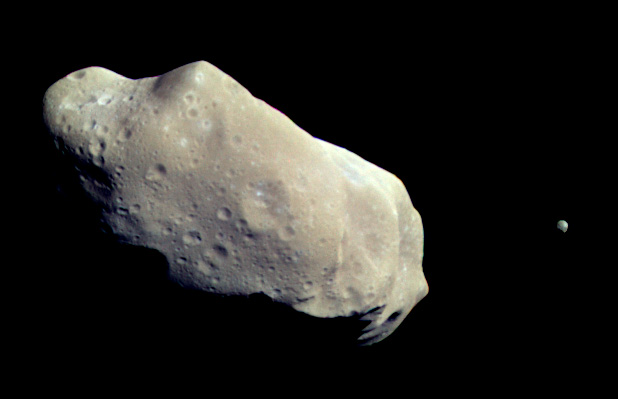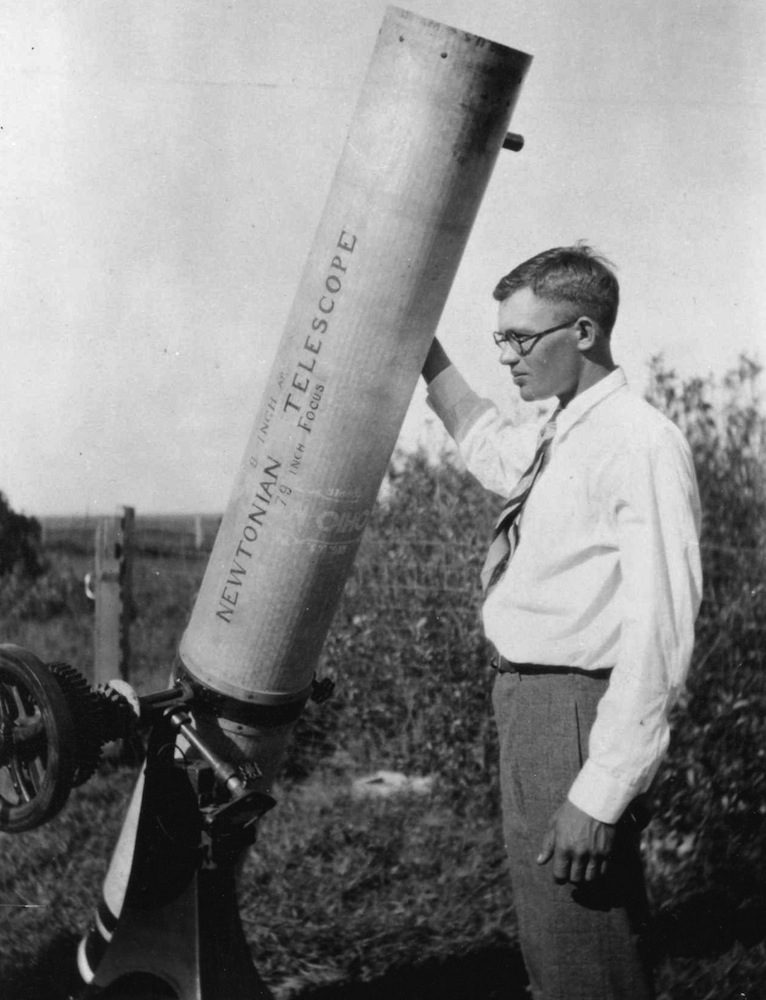|
Binary System
A binary system is a system of two astronomical bodies of the same kind that are comparable in size. Definitions vary, but typically require the center of mass to be located outside of either object. (See animated examples.) The most common kinds of binary system are binary stars and binary asteroids, but brown dwarfs, planets, neutron stars, black holes and galaxies can also form binaries. A ''multiple system'' is similar but consists of three or more objects, for example triple stars and triple asteroids (a more common term than 'trinary'). Classification In a binary system, the brighter or more massive object is referred to as primary, and the other the secondary. Binary stars are also classified based on orbit. Wide binaries are objects with orbits that keep them apart from one another. They evolve separately and have very little effect on each other. Close binaries are close to each other and are able to transfer mass from one another. They can also be classified ba ... [...More Info...] [...Related Items...] OR: [Wikipedia] [Google] [Baidu] |
Astronomical Bodies
An astronomical object, celestial object, stellar object or heavenly body is a naturally occurring physical entity, association, or structure that exists within the observable universe. In astronomy, the terms ''object'' and ''body'' are often used interchangeably. However, an astronomical body or celestial body is a single, tightly bound, contiguous entity, while an astronomical or celestial ''object'' is a complex, less cohesively bound structure, which may consist of multiple bodies or even other objects with substructures. Examples of astronomical objects include planetary systems, star clusters, nebulae, and galaxies, while asteroids, moons, planets, and stars are astronomical bodies. A comet may be identified as both a body and an object: It is a ''body'' when referring to the frozen nucleus of ice and dust, and an ''object'' when describing the entire comet with its diffuse coma and tail. History Astronomical objects such as stars, planets, nebulae, asteroids ... [...More Info...] [...Related Items...] OR: [Wikipedia] [Google] [Baidu] |
Binary Asteroid
A binary asteroid is a system of two asteroids orbiting their common barycenter. The binary nature of 243 Ida was discovered when the Galileo spacecraft flew by the asteroid in 1993. Since then numerous binary asteroids and several triple asteroids have been detected. The mass ratio of the two components – called the "primary" and "secondary" of a binary system – is an important characteristic. Most binary asteroids have a large mass ratio, i.e. a relatively small satellite in orbit around the main component. Systems with one or more small moons – also called "companions" or simply "satellites" – include 87 Sylvia, 107 Camilla and 45 Eugenia (all triples), 121 Hermione, 130 Elektra (a quadruple), 22 Kalliope, 283 Emma, 379 Huenna, 243 Ida and 4337 Arecibo (in order of decreasing primary size). Some binary systems have a mass ratio near unity, i.e., two components of similar mass. They include 90 Antiope, , an ... [...More Info...] [...Related Items...] OR: [Wikipedia] [Google] [Baidu] |
Celestial Mechanics
Celestial mechanics is the branch of astronomy that deals with the motions of objects in outer space. Historically, celestial mechanics applies principles of physics (classical mechanics) to astronomical objects, such as stars and planets, to produce ephemeris data. History Modern analytic celestial mechanics started with Isaac Newton's ''Principia'' (1687). The name celestial mechanics is more recent than that. Newton wrote that the field should be called "rational mechanics". The term "dynamics" came in a little later with Gottfried Leibniz, and over a century after Newton, Pierre-Simon Laplace introduced the term ''celestial mechanics''. Prior to Kepler, there was little connection between exact, quantitative prediction of planetary positions, using geometrical or numerical techniques, and contemporary discussions of the physical causes of the planets' motion. Laws of planetary motion Johannes Kepler was the first to closely integrate the predictive geometrical a ... [...More Info...] [...Related Items...] OR: [Wikipedia] [Google] [Baidu] |
Rotational Brownian Motion (astronomy)
In astronomy, rotational Brownian motion is the random walk in orientation of a binary star's orbital plane, induced by gravitational perturbations from passing stars. Theory Consider a binary that consists of two massive objects (stars, black holes etc.) and that is embedded in a stellar system containing a large number of stars. Let M_1 and M_2 be the masses of the two components of the binary whose total mass is M_=M_1+M_2. A field star that approaches the binary with impact parameter p and velocity V passes a distance r_p from the binary, where p^2=r_p^2\left(1+2GM_/V^2r_p\right) \approx 2GM_r_p/V^2; the latter expression is valid in the limit that gravitational focusing dominates the encounter rate. The rate of encounters with stars that interact strongly with the binary, i.e. that satisfy r_p < a, is approximately where and are the number density and velocity dispersion of the ... [...More Info...] [...Related Items...] OR: [Wikipedia] [Google] [Baidu] |
Double Planet
In astronomy, a double planet (also binary planet) is a binary satellite system where both objects are planets, or planetary-mass objects, and whose barycenter is external to both planetary bodies. Although up to a third of the star systems in the Milky Way are binary, double planets are expected to be much rarer given the typical planet to satellite mass ratio is around 1:10,000, they are influenced heavily by the gravitational pull of the parent star and according to the giant-impact hypothesis are gravitationally stable only under particular circumstances. The Solar System does not have an official double planet, however the Earth–Moon system is sometimes considered to be one. In promotional materials advertising the SMART-1 mission, the European Space Agency referred to the Earth–Moon system as a double planet. Several dwarf planet candidates can be described as binary planets. At its 2006 General Assembly, the International Astronomical Union considered a proposal ... [...More Info...] [...Related Items...] OR: [Wikipedia] [Google] [Baidu] |
Contact Binary (small Solar System Body)
A contact binary is a small Solar System body, such as a minor planet or comet, that is composed of two bodies that have gravitated toward each other until they touch, resulting in a bilobated, peanut-like overall shape. Contact binaries are distinct from true binary systems such as binary asteroids where both components are separated. The term is also used for stellar contact binaries. An example of a contact binary is the Kuiper belt object 486958 Arrokoth, which was imaged by the ''New Horizons'' spacecraft during its flyby in January 2019. History The existence of contact binary asteroids was first speculated by planetary scientist Allan F. Cook in 1971, who sought for potential explanations for the extremely elongated shape of the Jupiter trojan asteroid 624 Hektor, whose longest axis measures roughly across and is twice as long as its shorter axes according to light curve measurements. Astronomers William K. Hartmann and Dale P. Cruikshank performed further invest ... [...More Info...] [...Related Items...] OR: [Wikipedia] [Google] [Baidu] |
Contact Binary
In astronomy, a contact binary is a binary star system whose component stars are so close that they touch each other or have merged to share their gaseous envelopes. A binary system whose stars share an envelope may also be called an overcontact binary. The term "contact binary" was introduced by astronomer Gerard Kuiper in 1941. Almost all known contact binary systems are eclipsing binaries; eclipsing contact binaries are known as W Ursae Majoris variables, after their archetype star, W Ursae Majoris. In a contact binary, both stars have filled their Roche lobes, allowing the more massive primary component to transfer both mass and luminosity to the secondary member. As a result, the components in a contact binary often have similar effective temperatures and luminosities, regardless of their respective masses. The rate of energy transfer between the components is dependent on their mass ratio and luminosity ratio. In cases where the stars are in geometric contact but the ther ... [...More Info...] [...Related Items...] OR: [Wikipedia] [Google] [Baidu] |
Binary Star
A binary star or binary star system is a system of two stars that are gravitationally bound to and in orbit around each other. Binary stars in the night sky that are seen as a single object to the naked eye are often resolved as separate stars using a telescope, in which case they are called ''visual binaries''. Many visual binaries have long orbital periods of several centuries or millennia and therefore have orbits which are uncertain or poorly known. They may also be detected by indirect techniques, such as spectroscopy (''spectroscopic binaries'') or astrometry (''astrometric binaries''). If a binary star happens to orbit in a plane along our line of sight, its components will eclipse and transit each other; these pairs are called ''eclipsing binaries'', or, together with other binaries that change brightness as they orbit, ''photometric binaries''. If components in binary star systems are close enough, they can gravitationally distort each other's outer stellar atmospheres. ... [...More Info...] [...Related Items...] OR: [Wikipedia] [Google] [Baidu] |
Vanth (moon)
Vanth (formal designation (90482) Orcus I; provisional designation S/2005 (90482) 1) is a natural satellite or moon of the large trans-Neptunian dwarf planet Orcus. It was discovered by Michael Brown and Terry-Ann Suer using images taken by the Hubble Space Telescope on 13 November 2005. The moon has a diameter of , making it about half the size of Orcus and the third-largest moon of a trans-Neptunian object. Vanth is massive enough that it shifts the barycenter of the Orcus–Vanth system outside of Orcus, forming a binary system in which the two bodies revolve around the barycenter, much like the Pluto– Charon system. It is hypothesized that both systems formed similarly, most likely by a giant impact early in the Solar System's history. Compared to Orcus, Vanth has a darker and slightly redder surface that supposedly lacks exposed water ice, resembling primordial Kuiper belt objects. Discovery Vanth was discovered in Hubble Space Telescope images taken on 13 Novemb ... [...More Info...] [...Related Items...] OR: [Wikipedia] [Google] [Baidu] |
90482 Orcus
Orcus (minor-planet designation: 90482 Orcus) is a dwarf planet located in the Kuiper belt, with one large moon, Vanth. It has an estimated diameter of , comparable to the Inner Solar System dwarf planet Ceres. The surface of Orcus is relatively bright with albedo reaching 23 percent, neutral in color, and rich in water ice. The ice is predominantly in crystalline form, which may be related to past cryovolcanic activity. Other compounds like methane or ammonia may also be present on its surface. Orcus was discovered by American astronomers Michael Brown, Chad Trujillo, and David Rabinowitz on 17 February 2004. Orcus is a plutino, a trans-Neptunian object that is locked in a 2:3 orbital resonance with the ice giant Neptune, making two revolutions around the Sun to every three of Neptune's. This is much like Pluto, except that the phase of Orcus's orbit is opposite to Pluto's: Orcus is at aphelion (most recently in 2019) around when Pluto is at perihelion (most recently in 19 ... [...More Info...] [...Related Items...] OR: [Wikipedia] [Google] [Baidu] |
Charon (moon)
Charon ( or ), formal designation (134340) Pluto I, is the largest of the five known natural satellites of the dwarf planet Pluto. It has a mean radius of . Charon is the sixth-largest known trans-Neptunian object after Pluto, Eris, Haumea, Makemake, and Gonggong. It was discovered in 1978 at the United States Naval Observatory in Washington, D.C., using photographic plates taken at the United States Naval Observatory Flagstaff Station (NOFS). With half the diameter and one-eighth the mass of Pluto, Charon is a very large moon in comparison to its parent body. Its gravitational influence is such that the barycenter of the Plutonian system lies outside Pluto, and the two bodies are tidally locked to each other. The dwarf planet systems Pluto–Charon and Eris– Dysnomia are the only known examples of mutual tidal locking in the Solar System, though it is likely that – Vanth is another. The reddish-brown cap of the north pole of Charon is composed of tholins, o ... [...More Info...] [...Related Items...] OR: [Wikipedia] [Google] [Baidu] |
Pluto
Pluto (minor-planet designation: 134340 Pluto) is a dwarf planet in the Kuiper belt, a ring of Trans-Neptunian object, bodies beyond the orbit of Neptune. It is the ninth-largest and tenth-most-massive known object to directly orbit the Sun. It is the largest known trans-Neptunian object by volume by a small margin, but is less massive than Eris (dwarf planet), Eris. Like other Kuiper belt objects, Pluto is made primarily of ice and rock and is much smaller than the inner planets. Pluto has roughly one-sixth the mass of the Moon and one-third its volume. Originally considered a planet, its classification was changed when astronomers adopted a new definition of planet, definition of ''planet''. Pluto has a moderately Orbital eccentricity, eccentric and Inclination, inclined orbit, ranging from from the Sun. Light from the Sun takes 5.5 hours to reach Pluto at its orbital distance of . Pluto's eccentric orbit periodically brings it closer to the Sun than Neptune, but a stabl ... [...More Info...] [...Related Items...] OR: [Wikipedia] [Google] [Baidu] |






